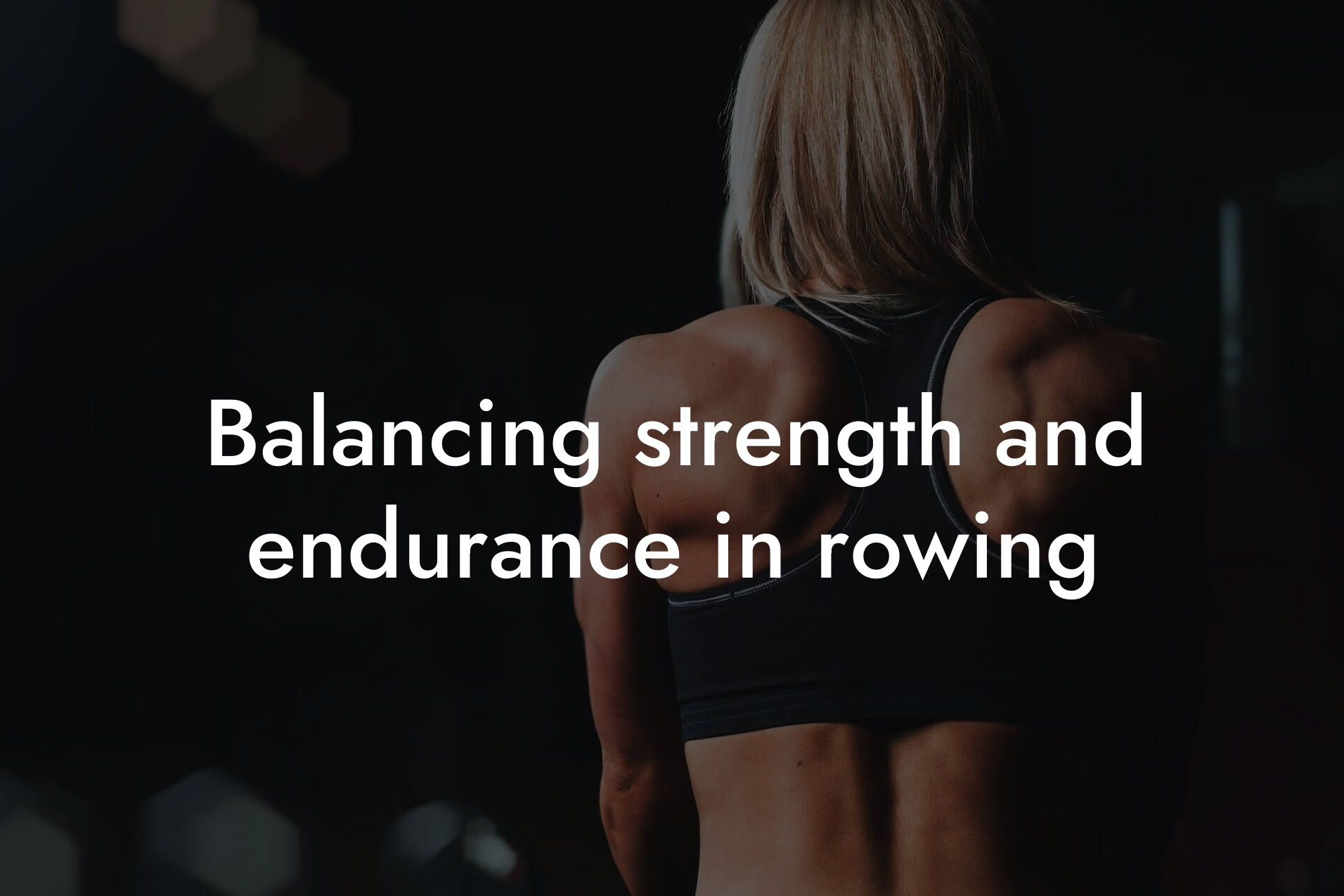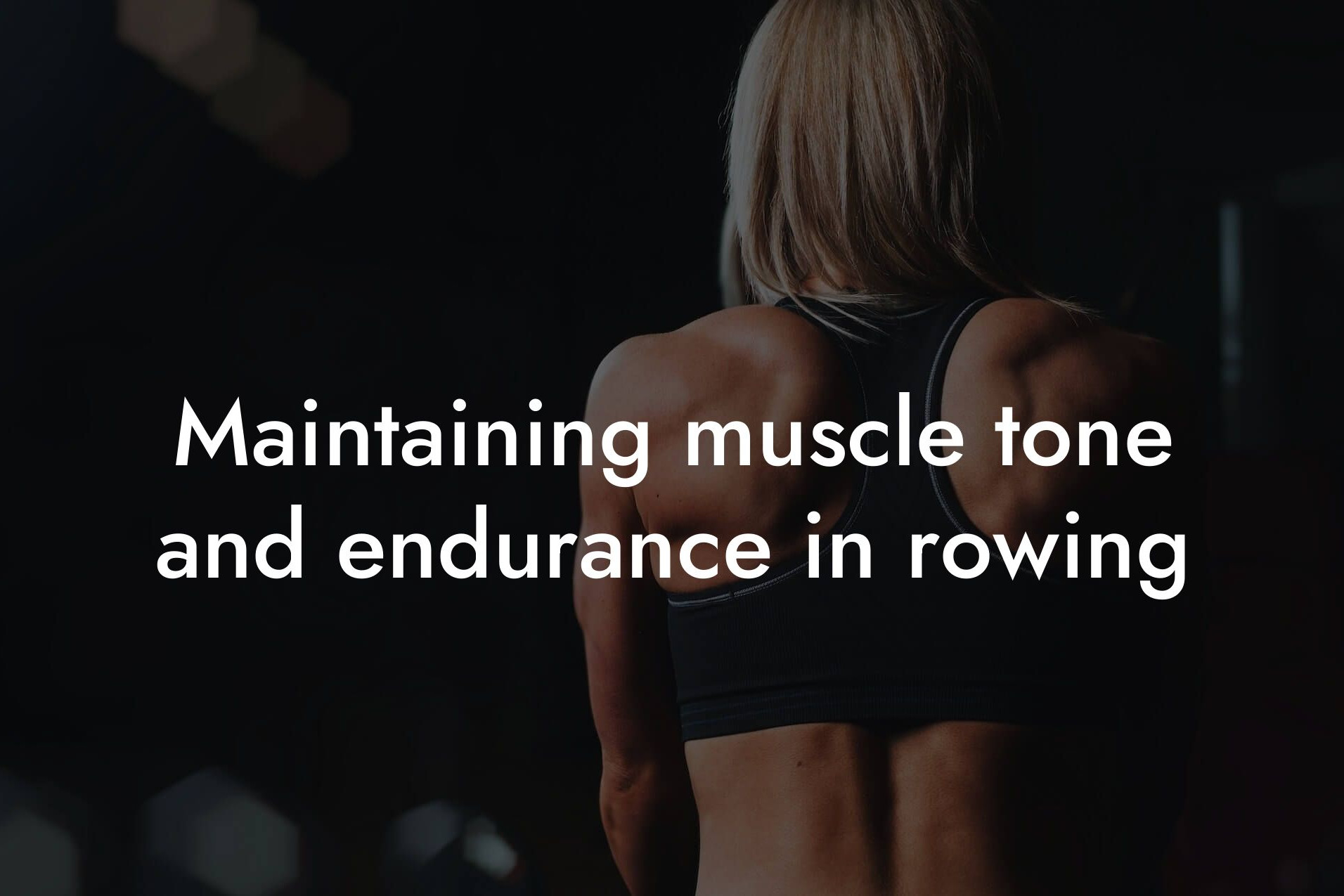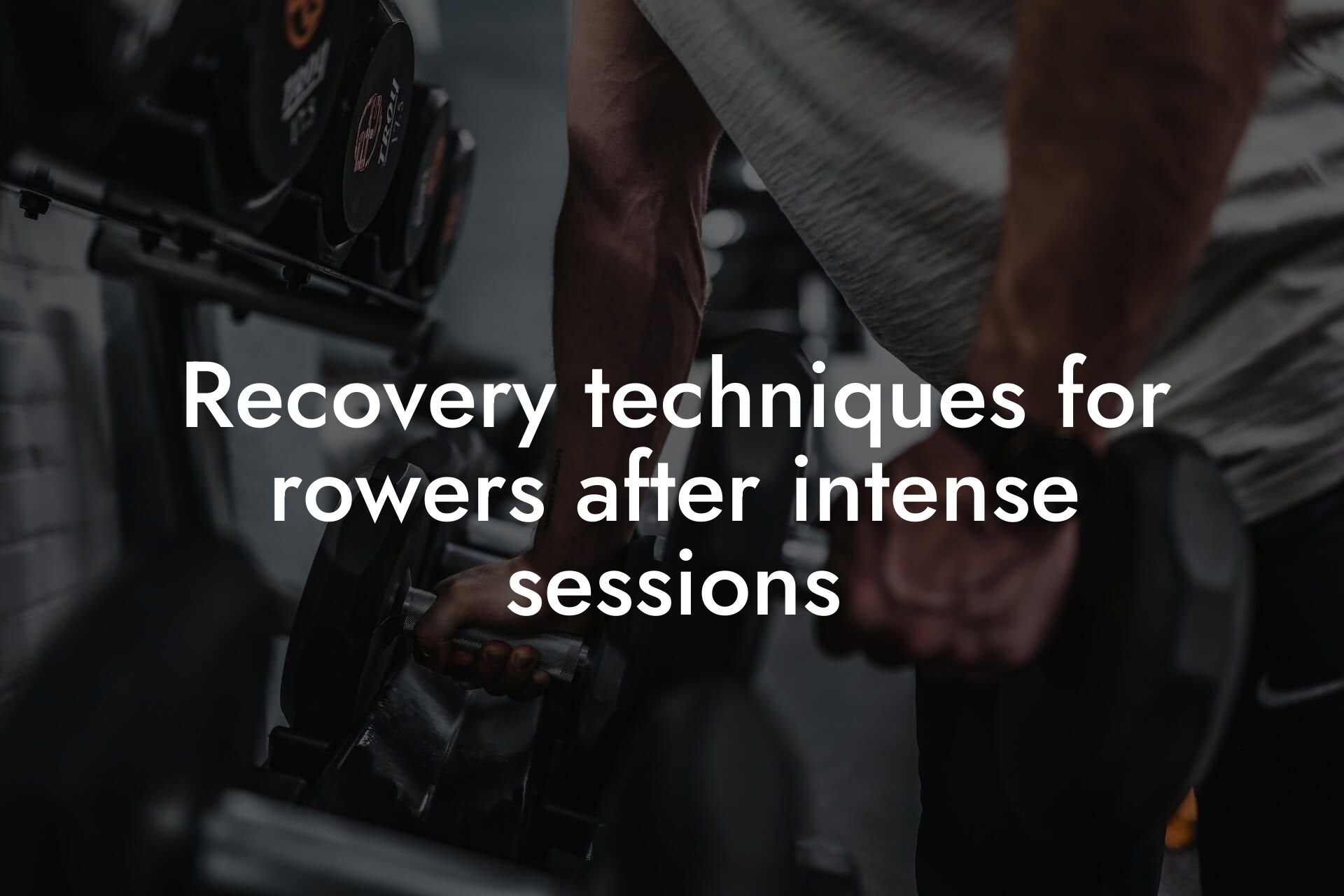Understanding the Importance of Body Composition for Rowing
As a high-earning professional, you understand the importance of maintaining a healthy and efficient physique. Rowing, in particular, is a physically demanding sport that requires a specific body composition to optimize performance. Excess body fat can hinder your rowing efficiency, making it essential to focus on reducing body fat percentage to achieve your goals. In this article, we will delve into the importance of body composition for rowing, the benefits of reducing body fat, and provide a comprehensive guide on how to achieve a leaner physique for improved rowing performance.
Table of Contents
- Understanding the Importance of Body Composition for Rowing
- The Impact of Body Fat on Rowing Performance
- The Benefits of Reducing Body Fat for Rowing
- Understanding Body Fat Percentage for Rowing
- Creating a Calorie Deficit for Weight Loss
- Nutrition Strategies for Reducing Body Fat
- Exercise Strategies for Reducing Body Fat
- Monitoring Progress with DEXA Scans
- Frequently Asked Questions
The Impact of Body Fat on Rowing Performance
Carrying excess body fat can significantly impair your rowing performance. Here are some reasons why:
• Increased Drag: Excess body fat creates additional drag, making it more challenging to move through the water. This results in reduced speed and efficiency, ultimately affecting your overall performance.
• Decreased Power-to-Weight Ratio: Excess body fat reduces your power-to-weight ratio, making it more difficult to generate force and speed. This can lead to fatigue and decreased endurance.
• Impaired Technique: Carrying excess body fat can alter your rowing technique, leading to poor form and increased risk of injury.
The Benefits of Reducing Body Fat for Rowing
Reducing body fat percentage can have a significant impact on your rowing performance. Here are some benefits you can expect:
• Improved Power-to-Weight Ratio: A leaner physique allows for a more efficient power-to-weight ratio, enabling you to generate more force and speed.
• Enhanced Endurance: Reducing body fat percentage can improve your endurance, allowing you to maintain a high intensity over a longer period.
• Better Technique: A leaner physique enables you to maintain proper rowing technique, reducing the risk of injury and improving overall performance.
Understanding Body Fat Percentage for Rowing
For rowing, a body fat percentage between 10-15% is considered ideal for men, while 15-20% is suitable for women. However, this can vary depending on individual factors such as age, muscle mass, and rowing style. It's essential to consult with a professional, such as a DEXA scan expert, to determine your ideal body fat percentage for optimal rowing performance.
Creating a Calorie Deficit for Weight Loss
To reduce body fat percentage, you need to create a calorie deficit. This means consuming fewer calories than your body burns, forcing it to use stored energy sources, including fat, for fuel. Aim to create a daily calorie deficit of 500-1000 calories to promote weight loss while preserving muscle mass.
Nutrition Strategies for Reducing Body Fat
A well-structured nutrition plan is crucial for reducing body fat percentage. Here are some strategies to focus on:
• Increase Protein Intake: Aim for 1.6-2.2 grams of protein per kilogram of body weight to preserve muscle mass and support weight loss.
• Focus on Whole Foods: Prioritize whole, unprocessed foods such as lean meats, fish, fruits, vegetables, and whole grains to provide essential nutrients and fiber.
• Hydrate Adequately: Drink plenty of water to stay hydrated and support overall health.
• Limit Processed Foods and Sugars: Restrict or avoid processed foods, sugary drinks, and saturated fats to minimize calorie intake and promote weight loss.
Exercise Strategies for Reducing Body Fat
In addition to a well-structured nutrition plan, a comprehensive exercise program is essential for reducing body fat percentage. Here are some strategies to focus on:
• High-Intensity Interval Training (HIIT): Incorporate HIIT workouts into your routine, such as sprints, burpees, or jump squats, to improve cardiovascular fitness and burn calories.
• Strength Training: Focus on strength training exercises, such as squats, deadlifts, and bench press, to build muscle mass and increase metabolism.
• Rowing-Specific Exercises: Incorporate rowing-specific exercises, such as rowing machine workouts or on-water rowing, to improve technique and burn calories.
Monitoring Progress with DEXA Scans
Regularly monitoring your progress is crucial to achieving your body composition goals. DEXA scans provide a comprehensive assessment of your body composition, including body fat percentage, lean mass, and bone density. By tracking your progress with regular DEXA scans, you can adjust your nutrition and exercise plan to optimize your results.
Reducing body fat percentage is essential for improving rowing efficiency and performance. By understanding the importance of body composition, creating a calorie deficit, and implementing a well-structured nutrition and exercise plan, you can achieve a leaner physique and optimize your rowing performance. Remember to regularly monitor your progress with DEXA scans and adjust your plan as needed to achieve your goals. With dedication and perseverance, you can take your rowing performance to the next level.
Frequently Asked Questions
What is the ideal body fat percentage for rowing?
For rowers, an ideal body fat percentage is typically between 6-12% for men and 16-23% for women. This range allows for optimal power-to-weight ratio, reducing drag and increasing efficiency on the water.
How does excess body fat affect rowing performance?
Excess body fat can significantly impact rowing performance by increasing drag, reducing power output, and affecting overall endurance. The added weight also puts additional strain on the muscles, joints, and cardiovascular system, leading to fatigue and decreased performance.
What are the benefits of reducing body fat for rowing?
Reducing body fat can lead to improved rowing efficiency, increased power output, enhanced endurance, and better overall performance. It can also reduce the risk of injury, improve mental focus, and boost confidence on the water.
How can I measure my body fat percentage?
There are several ways to measure body fat percentage, including skinfold measurements, bioelectrical impedance analysis (BIA), dual-energy X-ray absorptiometry (DXA), and hydrostatic weighing. Consult with a healthcare professional or certified fitness expert to determine the best method for you.
What is the best diet for reducing body fat for rowing?
A balanced diet that focuses on whole, nutrient-dense foods such as lean proteins, complex carbohydrates, and healthy fats can help support weight loss and body fat reduction. Aim to create a calorie deficit by eating fewer calories than you burn, and prioritize foods high in protein to support muscle growth and repair.
How can I create a calorie deficit for weight loss?
To create a calorie deficit, you can either reduce your daily caloric intake or increase your energy expenditure through exercise. Aim for a daily deficit of 500-1000 calories to promote weight loss while preserving muscle mass.
What are the best exercises for burning fat for rowing?
In addition to rowing-specific exercises, incorporating high-intensity interval training (HIIT) and strength training exercises that target multiple muscle groups can help burn fat and improve overall fitness. Examples include burpees, jump squats, and deadlifts.
How often should I exercise to reduce body fat for rowing?
Aim to exercise at least 3-4 times per week, with a mix of rowing-specific exercises, strength training, and HIIT. Include rest days to allow for recovery and muscle growth.
Can I reduce body fat through rowing alone?
While rowing is an effective exercise for burning calories, it may not be enough to achieve significant body fat reduction on its own. A comprehensive fitness program that includes a balanced diet, strength training, and HIIT can help support weight loss and improved rowing performance.
How long does it take to see results from a fat-loss program?
Results from a fat-loss program can vary depending on individual factors such as starting body fat percentage, diet, and exercise routine. However, with a consistent and well-structured program, you can expect to see noticeable results within 6-12 weeks.
What are the risks of rapid weight loss for rowing?
Rapid weight loss can lead to muscle loss, decreased performance, and increased risk of injury. Aim for a gradual weight loss of 0.5-1 kg per week to ensure a safe and sustainable approach.
How can I maintain muscle mass while reducing body fat?
To maintain muscle mass, prioritize a balanced diet that includes adequate protein, and incorporate strength training exercises that target multiple muscle groups. Aim to consume 1.6-2.2 grams of protein per kilogram of body weight daily.
What role does sleep play in body fat reduction for rowing?
Sleep plays a critical role in body fat reduction by regulating hormones that control hunger and fullness, as well as supporting muscle recovery and growth. Aim for 7-9 hours of sleep per night to support your fat-loss goals.
How can I stay motivated during a fat-loss program?
Stay motivated by setting specific, measurable, and achievable goals, tracking progress, and celebrating small victories along the way. Surround yourself with a supportive community, and consider working with a coach or trainer for added accountability.
What are the benefits of incorporating strength training for rowing?
Strength training can help improve rowing performance by increasing power output, enhancing endurance, and reducing the risk of injury. It can also support body fat reduction by building muscle mass.
How can I incorporate strength training into my rowing program?
Incorporate strength training exercises 2-3 times per week, focusing on exercises that target multiple muscle groups such as squats, deadlifts, and bench press. Aim to complete 3-4 sets of 8-12 reps for each exercise.
What are the best rowing-specific exercises for improving efficiency?
Rowing-specific exercises such as the rowing machine, kettlebell swings, and plyometric exercises like box jumps can help improve rowing efficiency by increasing power output and enhancing endurance.
How can I improve my mental game for rowing?
Improve your mental game by practicing visualization techniques, setting realistic goals, and developing a pre-performance routine to help manage competition anxiety. Focus on positive self-talk and celebrate small victories to build confidence.
What are the benefits of working with a coach or trainer for rowing?
Working with a coach or trainer can help you develop a personalized training program, provide accountability and support, and offer expert guidance on technique and nutrition. They can also help you set and achieve realistic goals, and provide valuable feedback on performance.
How can I track my progress during a fat-loss program?
Track your progress by taking regular body fat measurements, tracking weight, and monitoring performance metrics such as rowing times and power output. Use a food diary or mobile app to track nutrition, and take progress photos to monitor visual changes.
What are the most common mistakes rowers make when trying to reduce body fat?
Common mistakes include crash dieting, overtraining, and neglecting strength training. Avoid these mistakes by focusing on a balanced diet, incorporating strength training, and listening to your body to avoid burnout.
How can I maintain a healthy body fat percentage during the off-season?
Maintain a healthy body fat percentage during the off-season by continuing to prioritize a balanced diet, incorporating strength training, and staying active with low-intensity exercise such as cycling or swimming. Aim to maintain a consistent body fat percentage year-round to support optimal rowing performance.
What are the benefits of incorporating HIIT into my rowing program?
HIIT can help improve rowing performance by increasing power output, enhancing endurance, and reducing the risk of injury. It can also support body fat reduction by burning calories and building muscle mass.
How can I incorporate HIIT into my rowing program?
Incorporate HIIT 2-3 times per week, focusing on exercises such as sprints, burpees, and jump squats. Aim to complete 3-5 sets of 20-30 seconds of high-intensity exercise, followed by 1-2 minutes of active recovery.
Here are some related articles you might love...
- Balancing strength and endurance in rowing
- Maintaining muscle tone and endurance in rowing
- Recovery techniques for rowers after intense sessions
- How body composition impacts rowing performance
- The role of rowing in cardiovascular health
- Strength training tips to complement your rowing routine
- Using DEXA scans to monitor progress in rowing
- Bone density and its role in rowing performance
- Nutrition strategies for sustained energy during rowing workouts
Zak Faulkner
Zak Faulkner is a leading authority in the realm of physical health and body composition analysis, with over 15 years of experience helping professionals optimise their fitness and well-being. As one the experts behind Tano Performance Group, Zak has dedicated his career to providing in-depth, science-backed insights that empower clients to elevate their physical performance and overall health.
With extensive knowledge of DEXA technology, Zak specializes in delivering comprehensive body assessments that offer precise data on body fat, muscle mass, bone density, and overall physique. His expertise enables individuals to make informed decisions and achieve their fitness goals with accuracy and confidence. Zak’s approach is rooted in a deep understanding of human physiology, combined with a passion for helping clients unlock their full potential through personalised strategies.
Over the years, Zak has earned a reputation for his commitment to excellence, precision, and client-focused service. His guidance is trusted by top professionals who demand the best when it comes to their health. Whether advising on fitness programs, nutritional strategies, or long-term wellness plans, Zak Faulkner’s insights are a valuable resource for anyone serious about taking their health and fitness to the next level.
At Tano Performance Group, Zak continues to lead our Content Team revolutionising how professionals approach their physical health, offering unparalleled expertise that drives real results.




